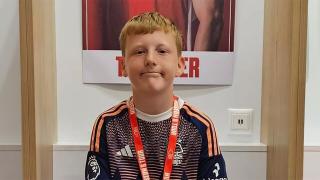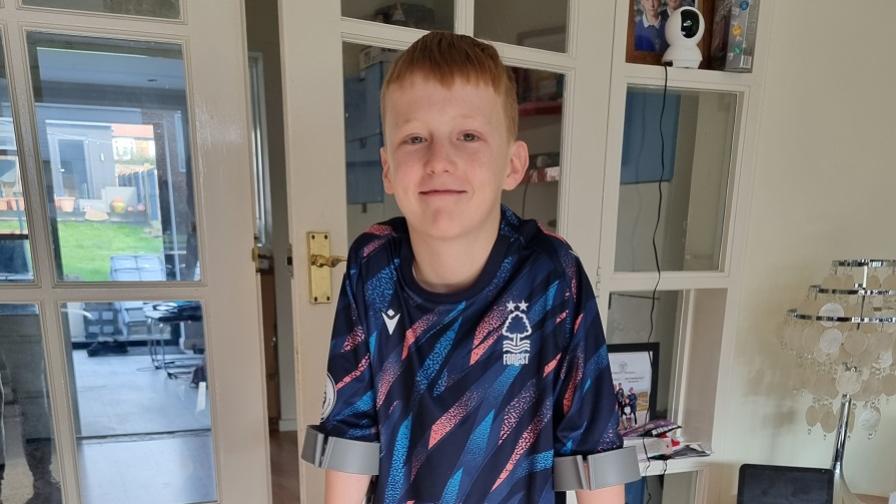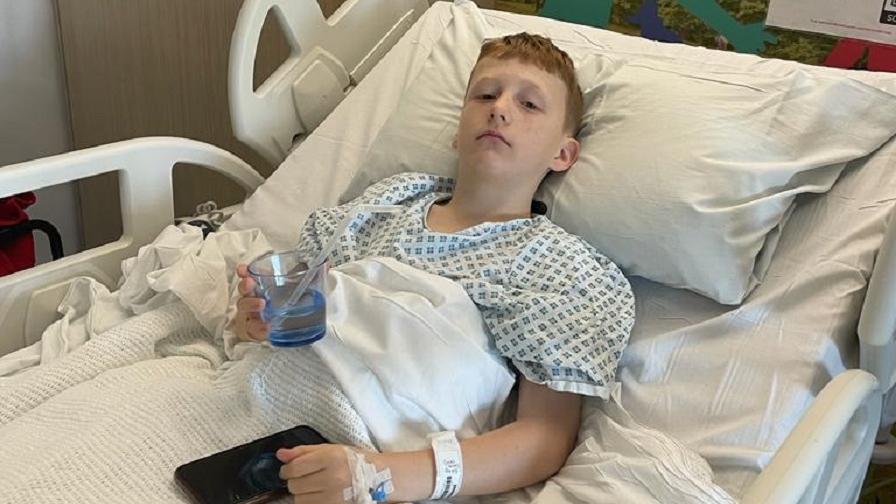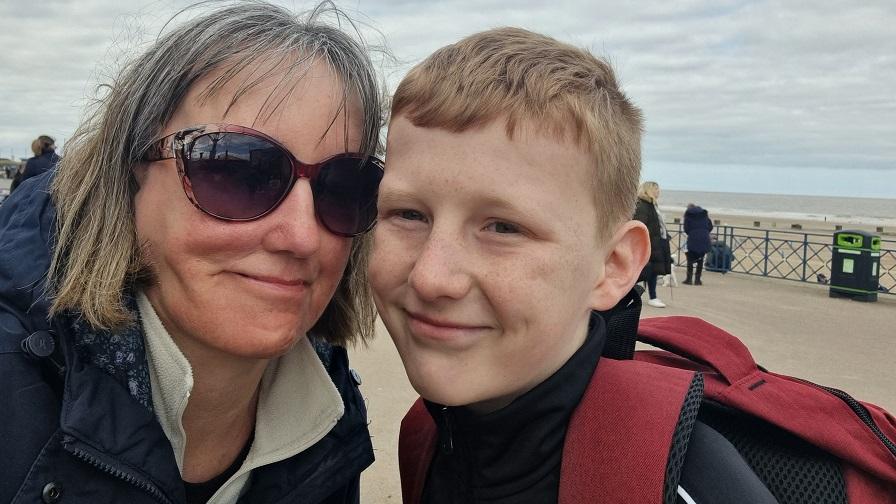breadcrumb navigation:
- Home /
- Research /
- Family stories /
-
current page
Oscar: neurofibromatosis type 2 (NF2)
Oscar: neurofibromatosis type 2 (NF2)
Published on
Updated:

Oscar's story
Neurofibromatosis type 2 (NF2)
Neurofibromatosis type 2 (NF2), more recently known as NF2-related schwannomatosis, causes multiple slow-growing tumours in different parts of the nervous system. While these tumours are not cancerous, their locations – often on crucial nerves, the spine and around the brain – can cause significant symptoms and make them very difficult to treat.
Children and teenagers with NF2 can experience problems with hearing, sight, balance, and mobility, and can suffer from weakness, pain, and headaches, as well as life-threatening complications, due to these tumours.

Oscar was diagnosed with NF2 when he was six years old, after he was found to have a juvenile cataract in his left eye. Over the last few years, he’s developed around 10 different tumours. These include two growing on the hearing nerves on both sides, which are causing low level hearing loss. He also has a frontal lobe meningioma in his brain and left and right trigeminal schwannomas at the base of the skull.
But it is the spinal tumours he has that have caused the most damage, resulting in severe problems in his left leg and foot. “It’s all caused by the loss of nerve function from the peroneal nerve which threads from the spine where the tumours are,” explains Oscar’s mum, Jo. “This caused severe turning inwards, known as club foot, as well as foot drop and muscle atrophy.”
Oscar has needed major surgery on his foot, forcing the sport-loving youngster to endure a long recovery. “He likes to keep as active as possible and plays football for a local team, which he’s really proud of – and his favourite subject at school is PE,” says his mum.
“It was a full year before Oscar could play football again”

There is currently no cure for NF2 and treatments such as surgery, where it’s possible, or radiotherapy are often only partially effective. Sadly, tumours can also recur.
Children like Oscar have a schedule that is packed with medical appointments and check-ups. In the last year, he’s started treatment with a drug called Avastin, which is also used to treat some types of cancer. While it can help to stabilise NF2-related tumours, it has to be given intravenously in hospital and can have serious side effects for some people. Thankfully, Oscar has tolerated Avastin well. But it does involve placing a cannula into a vein, which he always dreads.
Jo says that while Oscar is generally laid back and rarely complains, the treatments he’s had to endure, along with being so restricted in his sports, did start to take a toll on his mental health. “He felt very challenged by everything he was going through and much more isolated than normal,” she says. “Thankfully, an outreach nurse was able to offer support and connected him with opportunities for activities and socialising, which have really helped.”
I’ve heard stories from the NF2 community about children who are afraid for the future. No child should feel like that”

Helped by Action funding, a new treatment option for NF2 is now on the horizon. In 2016 the charity supported work led by Dr Sylwia Ammoun, to test existing antiviral drugs that could be repurposed to help treat NF2. This has now led to an exciting clinical trial in patients which started in 2024.
For Jo and Oscar such progress is incredibly welcome news. “Those affected by NF2 face so much uncertainty and anxiety about the future. A successful drug treatment would offer hope and a more positive long-term outlook, allowing patients to manage their condition with less disruption to their lives,” says Jo.
“Everyone with NF2 deserves a better future, especially the children. A future without the fear of where the next tumour will pop up and which nerve it will take, or which sense it will take.”
Find out more about the Action-funded research to find new treatments for NF2.
These new drugs could be a game-changer for patients and their families”

